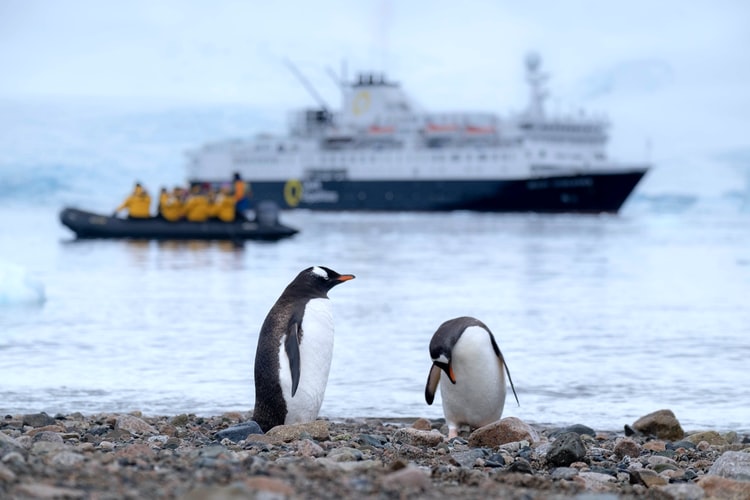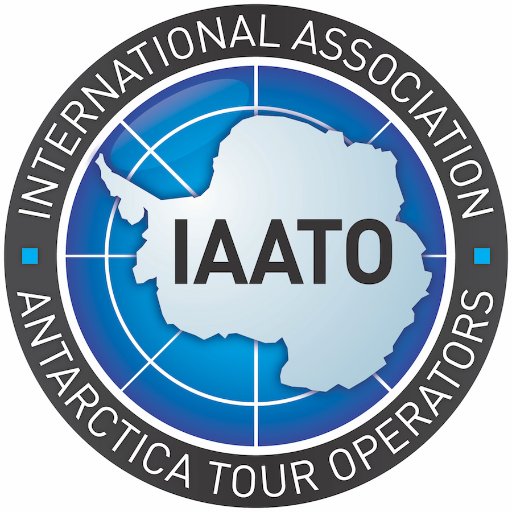This article about Antarctica’s tourism has been written by Laura Boyall and Benjamin Samingpai.
A trip to Antarctica is not a common holiday destination for many people. However, since the 1950s, there has been a growing number of individuals travelling to the southernmost continent. And then from the 1980s, the growth has been exponential with a 600% rise in travellers [1]. Each season Antarctica sees approximately 170,000 visitors from mostly English-speaking countries. However, there has been a recent rise in the number of tourists from China [2,3]. Click on the figure below to explore how Antarctica’s tourism changed in the 2018-2019 and 2019-2020 seasons.
Since the signing of the Antarctic Treaty in 1959, Antarctica has been designated as a place of peace and science, so this recent rise in tourism in Antarctica has sparked some debate about how sustainable tourism is. This article explains some of the steps which are taken to reduce the environmental impact of Antarctica’s tourism to ensure that more and more people can visit and see this unique icy continent [4].

Managing Antarctica’s Tourism

All human activity, including tourism in Antarctica, is governed by the Antarctic Treaty. This means that a set of rules and regulations are in place to manage Antarctica’s tourism to limit the environmental impacts on the continent [5]. An example of how tourism has been managed is the signing of the 1991 Protocol on Environmental Protection, which came into effect in 1998 [6]. Alongside other important environmental rules laid out in this protocol, such as waste disposal and marine pollution, this protocol specifically ensures that popular tourist sites are safe and environmentally protected.
The International Association of Antarctica Tour Operators (IAATO)

The International Association of Antarctica Tour Operators (IAATO) are the main tourism body for Antarctica, which are made up of seven of the largest Antarctic tour operators [7]. IAATO have a series of sustainable goals which are in line with the Protocol on Environmental Protection such as a limited impact on the Antarctic environment, they help spread awareness of environmental issues, and support Antarctic science with logistical support and research.
Sustainable Tourism Activities
There is a whole host of activities that tourists can do in Antarctica including water sports, wildlife excursions and mountain climbing, but there are also activities that help ongoing scientific research. This typically comes in the form of citizen science projects, but can also be helping with logistics, such as helping deliver equipment and supplies to researchers. There are a number of these projects available such as HappyWhale where tourists can upload images of whales they have spotted and their location to aid understanding about species distribution and numbers [8,9].
How Antarctica’s Tourism may not be Sustainable
Despite the sustainable procedures in place, tourism in Antarctica does have some environmental implications. Tourism in Antarctica typically occurs during the summer months (November to March) as it is when the sea ice surrounding the continent is at its minimum, allowing cruise ships to pass through with ease. However, this is when Antarctica is most sensitive with surface melt and ice shelf thinning at its highest, and ice accumulation at its lowest [10].
Threat to Antarctica’s Wildlife
The primary threat of humans visiting the most secluded continent on Earth is the introduction of alien species to its ecosystems. Seeds, bacteria and spores can enter Antarctica from items of clothing and equipment which can lead to the spread of invasive plant species and pathogens [11]. It is estimated that tourists can bring up to 9.5 seeds per person to Antarctica [14]. However, many tour operator staff are required to deep clean passengers belongings before they can step onto Antarctica.

In addition to this, vessels visiting Antarctica’s waters can sink and release harmful toxins and fuels to the ocean, putting Antarctica’s ecosystems at risk. An example of this is the sinking of the MS Explorer within the Drake Passage on the 23rd November 2007 after colliding with an iceberg. Whilst all crew and passengers were saved, the environmental impacts of this can still be seen today. As the vessel sank, it released petroleum, oil and lubricants to be released into the ecosystem [15-17], causing devastation to its wildlife.
About the Authors
Laura is a PhD student at Royal Holloway University of London interested in decadal climate variability and policy. She has been working as a website assistant for the AntarcticGlaciers.org team for a year leading the ESRI StoryMap Collections and has written a series of introductory articles for the website.
Benjamin is a recent geography graduate from Royal Holloway University of London. He will be starting his postgraduate degree in ‘Holocene Climates’ at the University of Cambridge. Benjamin’s interests lie in understanding the environmental response and interactions between physical and human systems.





Information
Awesome I don’t know when I can have another perfect Antarctic tour. Looking at the penguins is so cute and pretty.
Wow, what an incredible adventure! I recently read about your trip to Antarctica and was amazed by the unique and breathtaking landscapes. The vast glaciers and diverse wildlife are truly a sight to behold. The thought of exploring such an isolated and remote destination is truly inspiring. Your blog post highlights the importance of responsible tourism in preserving this fragile ecosystem. I couldn’t agree more with your message to minimize human impact and maintain the pristine beauty of Antarctica for generations to come. Thank you for sharing your unforgettable experience and raising awareness about sustainable travel. I can’t wait to plan my own trip to this stunning destination.
Tourists can engage in a wide range of activities in Antarctica, such as mountain climbing, animal trips, and water sports, but there are also activities that support ongoing scientific study.
Please subscribe me to your blog.